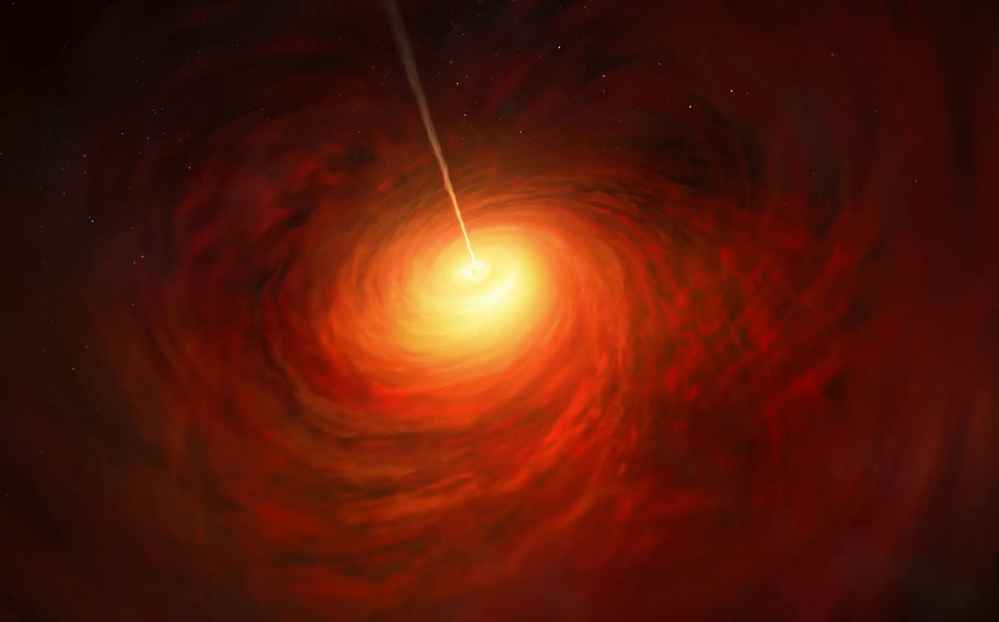This milestone opens new avenues for scientists to measure these enigmatic structures, decipher the feeding mechanisms of black holes, and comprehend their influence on the evolution of host galaxies.

In a groundbreaking observation, astronomers have achieved a remarkable feat by glimpsing the outer reaches of a black hole accretion disk, a disk of matter surrounding a supermassive black hole
Supermassive black holes, residing at the hearts of luminous regions known as active galactic nuclei (AGN), possess black hole accretion disks composed of gas and dust. This black hole accretion disk, subjected to intense gravitational forces, can reach blistering temperatures of up to 18 million degrees Fahrenheit, emitting a broad spectrum of radiation, from gamma rays to radio waves. Despite their brilliance, imaging these compact disks has proven challenging due to their size and vast distances.
A research team led by Denimara Dias dos Santos and Alberto Rodriguez-Ardila from the Instituto Nacional de Pesquisas Espaciais, Brazil, employed a novel technique to examine the black hole accretion disk of a remote quasar, III Zw 002, residing within the galaxy Messier 106. Their observations revealed near-infrared emission lines, enabling them to determine the size of the black hole accretion disk, which feeds a supermassive black hole boasting a mass between 400 and 500 times that of the sun.
Emission lines, seen when atoms transition from an excited to a ground state, carry unique information about the elements present in the accretion disk surrounding the black hole.
Emission lines from other celestial sources appear as thin spikes in spectra, but those originating from black hole accretion disks near supermassive black holes take on a distinctive form
The extreme conditions near these black holes cause the emission lines to broaden and display shallower peaks, resulting in the broad line region of the black hole accretion disk.
Furthermore, due to the Doppler shift, as one side of the black hole accretion disk moves closer to Earth, it exhibits shorter wavelengths, while the receding side displays longer wavelengths. This phenomenon generated double-peaked emissions, which were unambiguously detected by the astronomers, shedding light on the black hole accretion disk’s size.
The researchers determined that the hydrogen line emanates from a distance of 16.77 light-days from the central black hole, while the oxygen line originates at a radius of 18.86 light-days. They also estimated the outer radius of the broad line region to be 52.43 light-days and its inclination angle to Earth at 18 degrees.
This groundbreaking research, published in the Astrophysical Journal Letters, marks a significant step in unraveling the mysteries surrounding supermassive black hole accretion disks. The team plans to continue monitoring III Zw 002 and explore near-infrared observations for other active galactic nuclei.
READ ALSO: Indian Space Research Organisation Achieves Lunar Success With Chandrayaan-3 Mission




